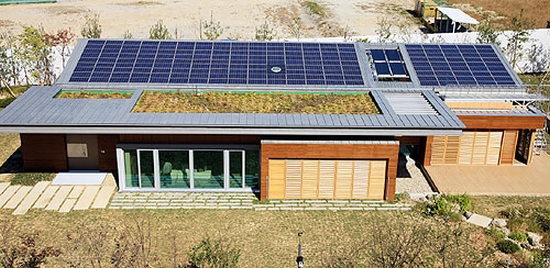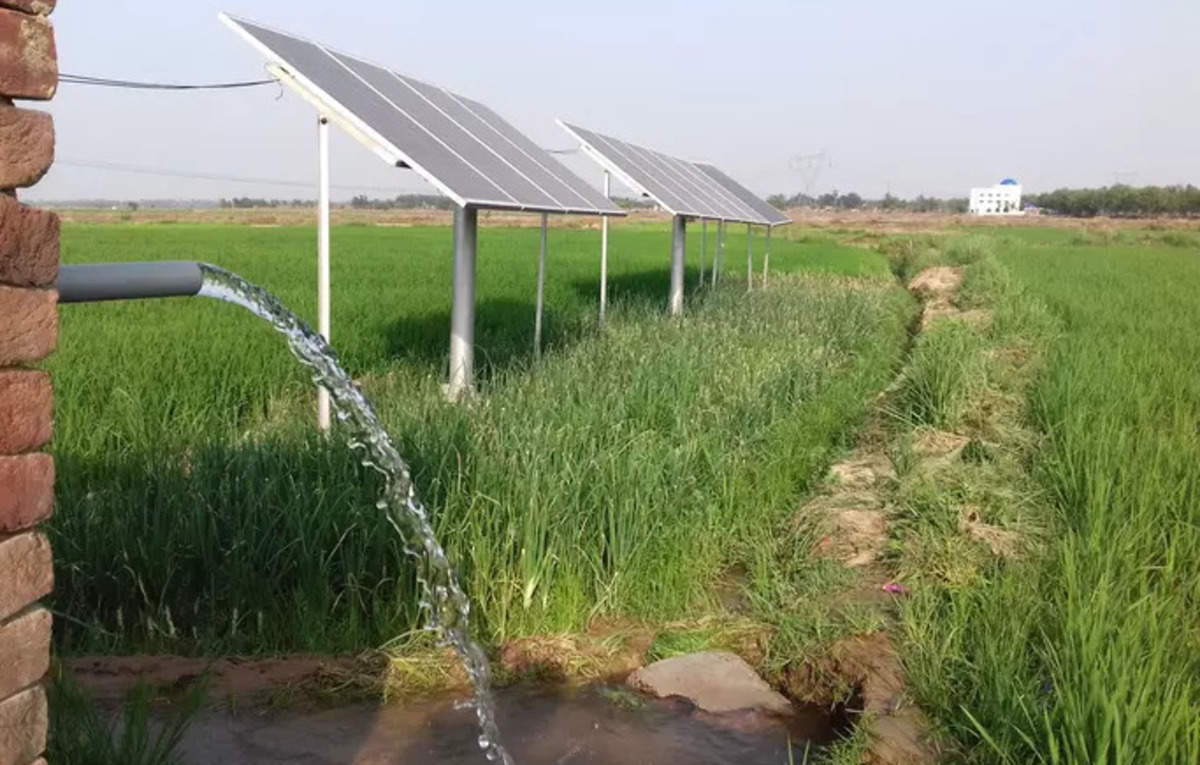Introduction
Embrace a sustainable future with cutting-edge Energy-Efficient Home Technologies. In this comprehensive guide, we’ll delve into innovative solutions that not only enhance your living space but also contribute to a greener planet.
Explanation of How Smart Thermostats Work
Smart thermostats represent a groundbreaking advancement in home climate control technology. Unlike traditional thermostats, these devices leverage cutting-edge sensors, machine learning algorithms, and connectivity to offer an intelligent and automated approach to managing your home’s temperature. Equipped with sensors that detect occupancy, ambient temperature, and humidity levels, smart thermostats continuously gather data to create personalized heating and cooling schedules.
The core functionality lies in their ability to connect to the internet, enabling remote access and control through dedicated mobile apps or virtual assistants. This connectivity allows users to adjust temperature settings, monitor energy usage, and even receive energy-saving recommendations from virtually anywhere in the world. Machine learning algorithms analyze historical data to predict and adapt to your preferences, optimizing energy consumption and creating a comfortable living environment.
Home Technologies: Benefits of Using Smart Thermostats in Reducing Energy Consumption
Smart thermostats offer a myriad of benefits, with energy efficiency at the forefront. By learning your behavior patterns, these devices can automatically adjust temperature settings when you’re away or asleep, preventing unnecessary energy consumption. The ability to remotely control your thermostat ensures that you never return to an uncomfortably hot or cold home, while also allowing you to make real-time adjustments for unexpected changes in your schedule.
Furthermore, many smart thermostats provide detailed energy reports, empowering users with insights into their consumption habits. This transparency encourages conscious decision-making, motivating homeowners to adopt eco-friendly practices and reduce their carbon footprint. With features like geofencing, which adjusts settings based on your proximity to home, and integration with weather forecasts, smart thermostats maximize efficiency and minimize wasted energy.
Efficient Home Technologies: Examples of Popular Smart Thermostat Brands
Nest
Acquired by Google, Nest thermostats are pioneers in the smart home industry. They boast sleek designs, self-learning capabilities, and compatibility with various smart home ecosystems.
Ecobee
Known for its innovative room sensor technology, Ecobee thermostats provide a more comprehensive understanding of your home’s temperature dynamics. This brand is renowned for its emphasis on user customization and energy savings.
Honeywell
A well-established name in the HVAC industry, Honeywell offers smart thermostats that combine reliability with modern features. Their devices often support voice control and geofencing for enhanced convenience.
Emerson Sensi
Recognized for its straightforward installation and user-friendly interface, Emerson Sensi smart thermostats are an excellent choice for those looking for a hassle-free solution with energy-saving features.
Transition to LED bulbs and their advantages
In the realm of energy-efficient lighting, the transition to LED bulbs stands out as a beacon of innovation and sustainability. Light Emitting Diode (LED) technology has revolutionized the way we illuminate our surroundings, offering a plethora of advantages over traditional incandescent and fluorescent bulbs.
LED bulbs are renowned for their remarkable energy efficiency. They consume significantly less electricity than their counterparts, translating to lower energy bills and reduced environmental impact. The longevity of LED bulbs is another shining feature, as they outlast traditional bulbs by a substantial margin, cutting down on replacement costs and contributing to a decrease in overall waste.
Moreover, LED bulbs are eco-friendly, containing no hazardous materials like mercury found in fluorescent lights. This makes their disposal safer for the environment. The versatility of LED lighting is also worth noting, with options ranging from warm to cool tones, allowing users to customize their lighting experience according to preference.
Making the switch to LED bulbs is not just a smart choice for energy conservation—it’s a step towards a brighter, more sustainable future.

Innovative lighting technologies for energy conservation
As technology continues to advance, innovative lighting technologies are emerging as champions in the quest for energy conservation. Smart lighting systems, for instance, are at the forefront of this revolution. These systems use sensors and automation to adjust lighting levels based on occupancy, natural light availability, and time of day, optimizing energy usage.
Another breakthrough is the development of energy-efficient light fixtures that incorporate advanced materials and design principles. These fixtures not only enhance illumination but also minimize energy wastage through improved light distribution and reduced heat generation.
Daylight harvesting is yet another innovative approach, utilizing sensors to harness natural sunlight and adjusting artificial lighting accordingly. This not only conserves energy but also creates a more harmonious and adaptive lighting environment.
Investing in these cutting-edge technologies is not just a futuristic fantasy; it’s a strategic move towards a sustainable and energy-conscious future.
Impact of energy-efficient lighting on electricity bills
Switching to energy-efficient lighting isn’t merely a conscientious choice; it’s a practical one with a tangible impact on electricity bills. The transition to LED bulbs and adoption of innovative lighting technologies can lead to substantial savings over time.
LED bulbs, with their lower energy consumption, can result in significant reductions in monthly electricity expenses. The longevity of these bulbs means fewer replacements, translating to additional long-term cost savings.
Moreover, the implementation of smart lighting systems and other energy-efficient technologies contributes to a more optimized use of electricity. By reducing unnecessary energy consumption through automation and smart controls, households and businesses alike can witness a noticeable drop in their electricity bills.
Introduction to Residential Solar Panel Systems
Embracing the power of the sun has never been more accessible, with residential solar panel systems emerging as a sustainable solution for homeowners seeking to reduce their carbon footprint and energy bills. These systems convert sunlight into electricity, offering a clean and renewable alternative to traditional energy sources. As technology advances, the efficiency of solar panels continues to improve, making it an increasingly viable option for households around the globe.
Benefits of Harnessing Solar Energy for Homes
The decision to harness solar energy brings a myriad of benefits to homeowners. Firstly, it’s an eco-friendly choice, reducing reliance on fossil fuels and decreasing greenhouse gas emissions. Beyond environmental advantages, solar panels translate into long-term financial savings. By generating your electricity, you can significantly slash or even eliminate your monthly utility bills. Additionally, many regions offer incentives, tax credits, and rebates for solar installations, making the initial investment more appealing. Not only does this increase the value of your home, but it also positions you as a proactive contributor to a sustainable future.
Considerations for Installing Solar Panels
While the benefits are enticing, installing solar panels requires careful consideration. Start with a comprehensive assessment of your home’s energy needs to determine the appropriate system size. Consider factors such as roof orientation, shading, and local weather patterns. Budget is another crucial aspect—although the initial investment may seem significant, the long-term savings make it a wise financial move. Choose a reputable installer with experience in your area to ensure proper installation and optimal performance. Additionally, be aware of local regulations, permits, and homeowners association rules that may impact your solar panel installation.
Overview of Home Automation Systems:
Home automation systems have revolutionized the way we interact with our living spaces, bringing a seamless blend of technology and comfort into our daily lives. These systems encompass a network of smart devices and sensors that work together to create an intelligent and interconnected environment within your home.
From smart thermostats and lighting controls to security cameras and voice-activated assistants, home automation systems provide a centralized platform for managing various aspects of your home. These systems are designed to enhance efficiency, convenience, and overall living experience. With the advent of the Internet of Things (IoT), these devices can communicate and collaborate, creating a synchronized and responsive ecosystem.
As technology continues to advance, the possibilities within home automation are expanding, offering homeowners unprecedented control over their surroundings. The key to a successful home automation setup lies in choosing compatible devices and integrating them seamlessly to create a cohesive and user-friendly system.
Integration of Smart Devices for Energy Efficiency
One of the primary benefits of home automation is its ability to contribute to energy efficiency. Smart devices, such as thermostats, lighting controls, and energy monitoring systems, can be integrated to optimize energy consumption. For instance, smart thermostats learn your preferences over time and adjust heating or cooling accordingly, resulting in reduced energy wastage.
Lighting controls enable you to schedule and automate lighting based on occupancy or natural light conditions, reducing unnecessary energy consumption. Energy monitoring systems provide real-time insights into your energy usage, empowering you to make informed decisions about how and when to use appliances.
By strategically integrating these smart devices, homeowners can create an energy-efficient home that not only reduces environmental impact but also results in cost savings over time.
Enhancing Convenience While Reducing Energy Consumption
Home automation goes beyond energy efficiency—it’s about enhancing overall convenience. Automated routines can be set up to simplify daily tasks, such as adjusting the thermostat, turning off lights, or even locking doors, with a single command or schedule. Voice-activated assistants like Amazon Alexa or Google Assistant further streamline the interaction between you and your smart home.
The seamless integration of convenience and energy efficiency is a hallmark of a well-designed home automation system. By leveraging smart technology, homeowners can enjoy a more comfortable and streamlined living experience while contributing to a greener and more sustainable future.
Read more: Voice-Activated Assistants in Homes: A Symphony of Convenience
FAQs (Frequently Asked Questions)
Are Energy-Efficient Home Technologies Expensive?
Embracing energy efficiency can initially require an investment, but the long-term savings outweigh the initial costs. Government incentives and rebates also make these technologies more accessible.
Can I Install Solar Panels on Any Type of Roof?
While solar panels are versatile, the ideal roof depends on factors like orientation, shading, and structural integrity. Consulting with a professional ensures optimal placement and efficiency.
How Do Smart Thermostats Contribute to Energy Savings?
Smart thermostats adapt to your schedule, learning preferences over time. By optimizing heating and cooling based on occupancy and patterns, they significantly reduce energy consumption.
Do Energy-Efficient Windows Really Make a Difference?
Yes, energy-efficient windows can make a substantial difference. They minimize heat transfer, reducing the need for excessive heating or cooling, thus conserving energy.
What’s the Lifespan of Smart Appliances?
The lifespan of smart appliances varies, but on average, they last around 10-15 years. Regular maintenance and software updates contribute to prolonged functionality.
Can I Retrofit My Home with Energy-Efficient Technologies?
Absolutely! Many Energy-Efficient Home Technologies are retrofit-friendly, allowing you to upgrade your home gradually for increased sustainability.
Conclusion
As we navigate the dynamic landscape of Energy-Efficient Home Technologies, it’s evident that the choices we make today shape a more sustainable tomorrow. Embrace innovation, reduce your carbon footprint, and create a home that harmonizes comfort with conservation.

